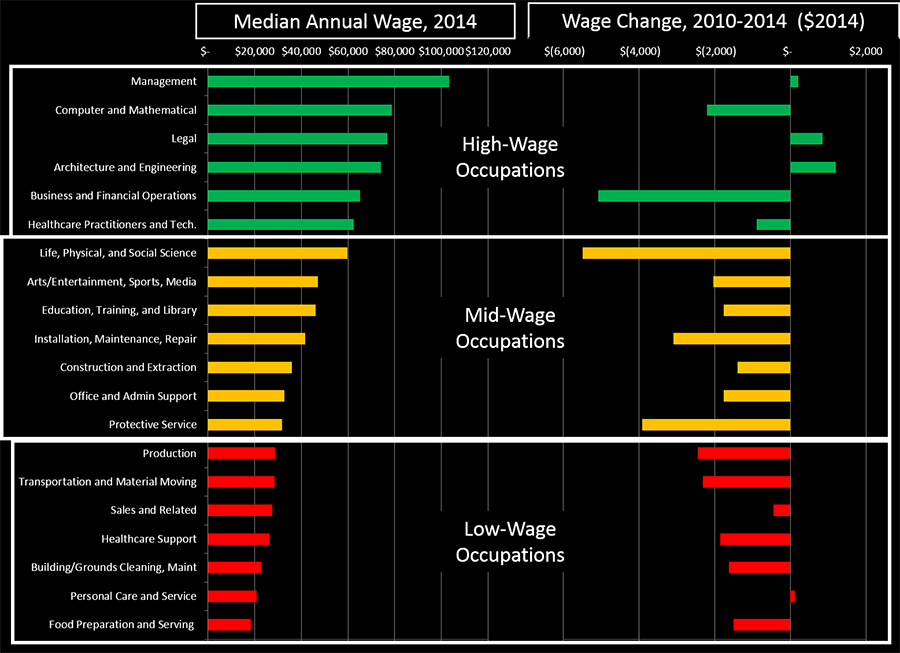Amid the rise of income inequality in both the nation and here in metro Atlanta, many researchers are pointing to the slow growth of middle-wage jobs as one of the culprits behind this phenomenon. And, indeed, in looking at occupational data from the Bureau of Labor Statistics, there has been hardly any job growth in middle-wage occupations since 2010, as Chart 1 below shows.
Chart 1 shows that middle-wage occupations – those represented by the yellow-ish bars, have added fewer jobs since 2010 than both the high- and low-wage occupation groups. Between 2010 and 2014, jobs in high-wage occupations increased 11 percent; jobs in the low-wage occupations increased almost 15 percent, but jobs in the middle-wage occupations barely changed at all – increasing less than one percent.
Further, growth in wages (or, rather, lack of growth), while bad across most sectors, is particularly bad in the middle-wage occupations. As Chart 2 below shows, the only occupations to see any significant increase in wages (adjusted to 2014 dollars) are those in the high-wage categories (Legal and Architects & Engineers). During that same time, wages in middle- and low- wage occupations experienced dramatic declines.
Admittedly, the way in which we classified these occupations into the three wage buckets is largely arbitrary. We easily could have put “Life, Physical and Social Science” into the high-wage groups, for example. But the conclusions stand – wage growth, in general, has been stagnant over the past four years, and job growth in those middle-wage occupations has been close to nothing.



